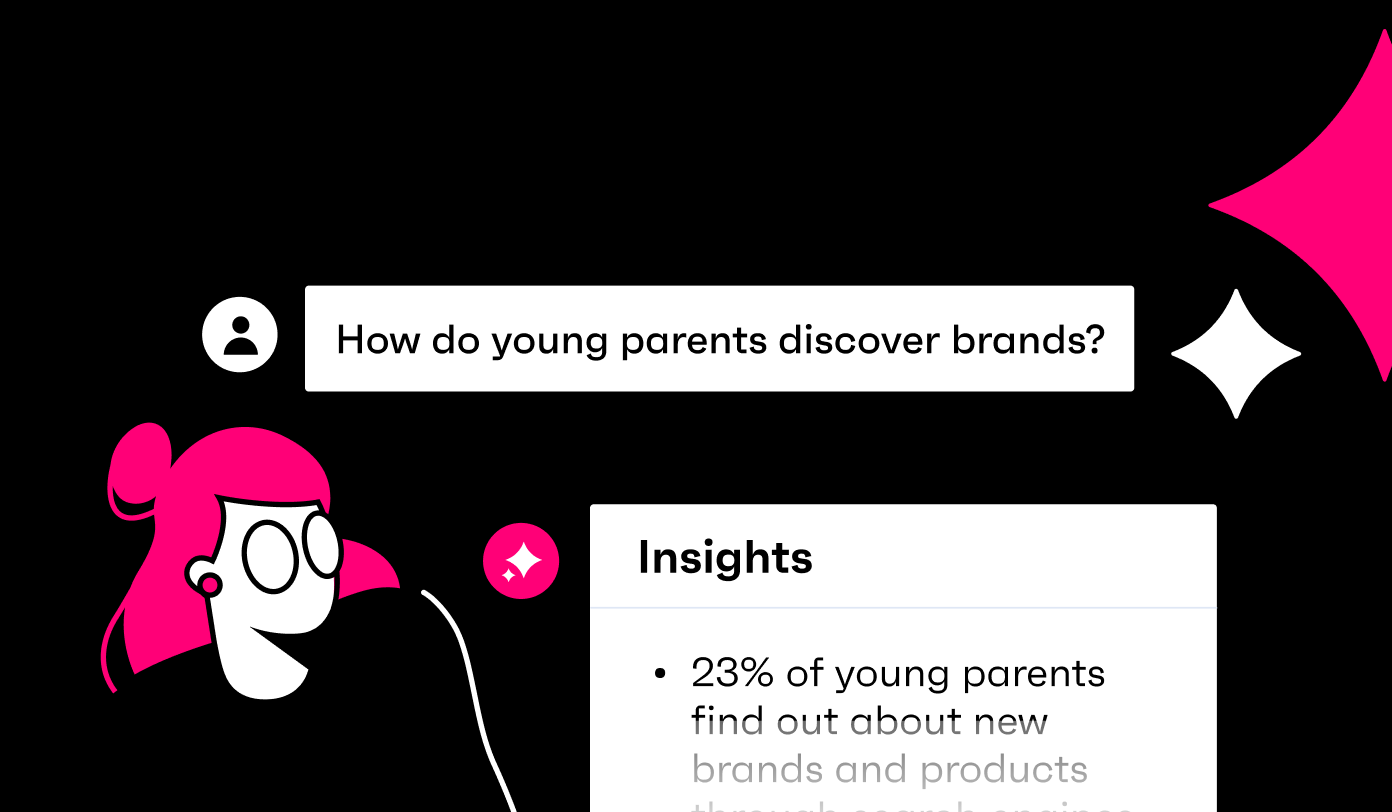Just like other audiences all over the world, consumers in the Asia Pacific region are navigating the cost of living, riding the wave of inflation, and trying to wrap their heads around all the rapidly-developing technologies – like digital currency and virtual assets.
And if there’s one part of Web3 that’s stolen the show, it’s crypto. Unfortunately, it’s bad publicity. Last year’s FTX crash shook the industry – leaving plenty of room for debate and discussion.
Now, brands are trying to figure out what consumers really think of the investment. Who’s the target market? Has sentiment changed? Are people excited about the industry’s future? For brands eager to make their mark with crypto, check out these essential insights to make headway in this new, exciting, and unpredictable world of tech and finance.
10 cryptocurrency trends in APAC
1. Cryptocurrency ownership is on the rise
2. 36% of cryptocurrency owners in APAC are female
3. Millennials are the biggest group of crypto owners in APAC
4. Consumers of various education levels own cryptocurrency
5. Consumers are excited about some emerging technologies
6. Countries in Southeast Asia are more excited about blockchain technology
7. 41% of cryptocurrency owners describe themselves as risk takers
8. Most consumers support the government regulating cryptocurrency trading
9. Trust in institutions is spread across the board
10. Consumers are split on what the future of the cryptocurrency market holds
Let’s dive into the facts in detail.
1. Cryptocurrency ownership is on the rise
The three countries that rank the highest for cryptocurrency owners in Q3 2022 are the Philippines (23%), Thailand (22%), and Indonesia (20%).
Having said that, other markets may be catching up soon.
In Vietnam, the number of cryptocurrency owners has grown an impressive 65% year-on-year, followed by Taiwan at 43% and Hong Kong at 40% since Q3 2021.
There are a few countries where ownership has dropped including Japan (-22%), China (-5%), and Singapore (-2%), and there’s plenty of speculation why.
In 2018, Japan’s cryptocurrency exchange suffered a jaw-dropping loss of more than 58 billion Yen – roughly $500 million – at the hands of hackers. At the time, it was considered to be one of the biggest heists ever. The collapse not only shattered investor confidence, it also triggered policymakers to consider tougher regulations.
2. 36% of cryptocurrency owners in APAC are female
Although most cryptocurrency owners in APAC are male (64%), there’s still a growing market for female owners that’s poised to possibly grow in the coming years.
As our Senior trends analyst, Jo Ling, explains: “Fintech is hailed by many as a step towards financial inclusion for women by breaking down traditional barriers and making banking more accessible. And in fact, 89% of women say they’ve used at least one online payment service in the past month.”
This gap in ownership gives brands that are paying attention the opportunity to reach out to an audience that may have previously been overlooked, and zero in on expanding crypto adoption with the right targeted resources.
3. Millennials are the biggest group of crypto owners in APAC
Brands and crypto companies looking to tap into younger markets may find their way in with millennials. Right now, 36% of cryptocurrency owners in APAC are aged 25-34, followed by 35-44 year olds at 26%, and 16-24 year olds right behind with 23%.
The number of cryptocurrency owners drops significantly among older generations, with ages 45-54 at 10% and 55-64 at just 5%.
Whether it’s a fear of new or volatile investments, a lack of technological savviness, or a preference for traditional financial institutions, the crypto uptake is significantly weaker among older consumers.
4. Consumers of various education levels own cryptocurrency
Even though the majority of cryptocurrency owners have attended a trade/technical school, been to college, or have a postgraduate degree, the playing field is still open to everyone.
A quick look at this breakdown shows the education level of owners in the APAC region spans a healthy range.
- 6% attended schooling until age 16
- 38% attended schooling until age 18
- 26% attended trade/technical school or college
- 22% have achieved a university degree
- 9% have achieved a postgraduate degree
Considering FinTech has a reputation for democratising finance to the wider world, it’s good to see cryptocurrency hasn’t escaped that reality. When it comes to this part of Web3, education doesn’t have that much of a say. Perhaps crypto’s accessibility – largely fuelled by modern investment apps – has opened doors where traditional investment institutions haven’t. Plus, pop culture’s obsession with the world of crypto will have put the asset type on everyone’s radar. And you really can just dip your toe in the water, if you choose to, all from the comfort of your couch.
5. Consumers are excited about some emerging technologies
New products and technologies are constantly emerging for consumers to make their mind up about. And in APAC, the excitement seems pretty tech-focused – at least for the most part.
In APAC, internet users are most excited about artificial intelligence (51%), the internet of things (48%), and robotics (32%).
Having said that, some technology, such as blockchain and non-fungible tokens (often called NFTs) rank among the lowest. Interestingly, outside the world of tech, cultured/artificial meat sits pretty low in terms of generating excitement.
6. Countries in Southeast Asia are more excited about blockchain technology
Although the majority of APAC consumers aren’t too big on blockchain, countries like the Philippines and Vietnam are, which shows the importance of looking at your audience on a more local level.
Compared to countries like Japan (8%), New Zealand (14%), and Australia (17%), the excitement sees a huge jump at 38% for both the Philippines and Vietnam.
India isn’t too far behind with 32%, followed by Indonesia (29%), and Thailand (28%).
7. 41% of cryptocurrency owners describe themselves as risk takers
One thing about cryptocurrency owners that’s certain is they’re willing to take the plunge into the unknown.
51% of crypto owners describe themselves as adventurous and 39% say they buy new tech products as soon as they’re available.
They also describe themselves as creative (59%), confident (61%), ambitious (44%), and open-minded (66%).
This gives brands a chance to speak to consumers in a way that really hits home. By having a grasp on these sorts of self-perceptions, you’ll be able to craft messages that are intentional and impactful.
8. Most consumers support the government regulating cryptocurrency trading
Nearly half of the consumers who own, use, or have heard of cryptocurrency in Australia (48%) and Singapore (47%) support government regulation.
This trend is showing up in other countries as well where more rigid regulations are being implemented.
In Thailand, the Securities and Exchange Commission recently released a new set of policies and guidelines to ensure the safety of consumers’ assets. In Japan, lawmakers are focusing on developing regulations for stablecoins, NFTs and decentralized autonomous organizations (DAOs).
9. Trust in institutions is spread across the board
Consumers in APAC who use, own, or have heard of cryptocurrency are divided on what institutions they trust to actually lead regulation.
In Singapore, 48% of consumers trust their national government, 29% trust economic groups like the World Bank or IMF, and 28% trust traditional banks and financial institutions.
In Australia, the numbers are a little lower. Just 33% of consumers trust their national government to regulate crypto, 19% trust world economic groups, and 17% trust traditional banks or financial institutions.
42% of Australians don’t trust any institution to regulate cryptocurrency.
In Australia and Singapore, the institutions that have the least consumer trust are technology companies, cryptocurrency exchanges, and international government alliances like the EU and NATO.
10. Consumers are split on what the future of the cryptocurrency market holds
There’s a lot of mixed sentiment about what’s next when it comes to cryptocurrency, but most people are feeling pessimistic.
In fact, most consumers that own, use, or have heard of cryptocurrency think the future of cryptocurrency is negative. In Australia, 42% of consumers feel negative, 29% feel neutral, and only 16% feel positive.
The numbers are a little more balanced in Singapore where 31% of consumers feel positive, 29% feel neutral and 31% feel negative.
So what’s the key takeaway here?
Understanding what global buyers want when it comes to finance and fintech is crucial if you want to authentically connect with your target audience and reach your next consumer.
Never forget – actionable insights are the way to supercharge your relevance with audiences.
When you want to reach your audience, it’s important to know what they like, what they feel strongly about, and how you can ease any fears. Knowing who you’re talking to, what they’re excited about, and where you can fill the gaps is your key to getting things right with your next strategy.
Report: Finance and fintech
Download now





.webp?width=495&height=317&name=pink_thumb_graphs%20(1).webp)
.webp?width=495&height=317&name=pink_thumb_letter%20(2).webp)
